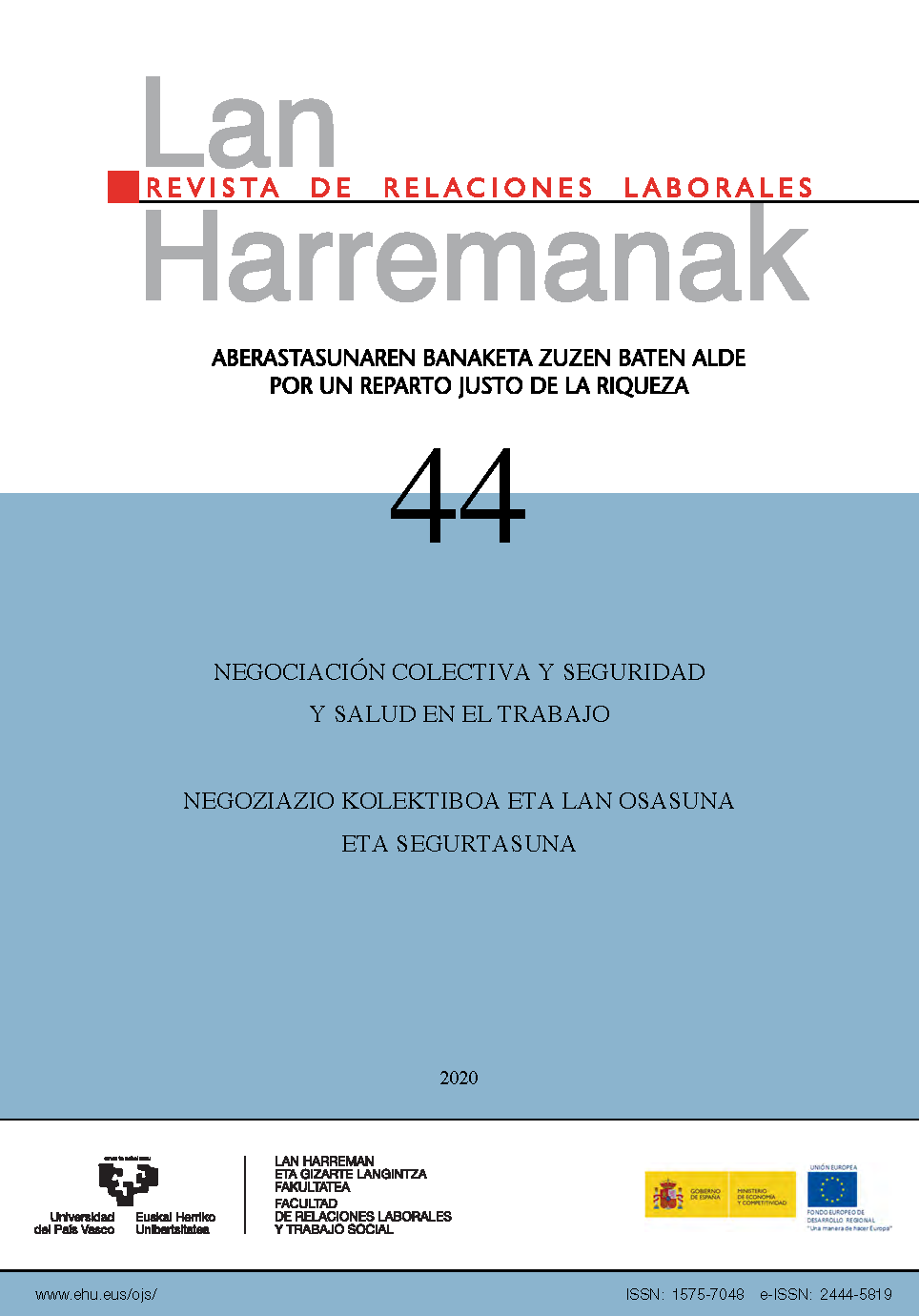Older workers and occupational hazard prevention: an analysis from the collective bargaining
##plugins.themes.bootstrap3.article.main##
##plugins.themes.bootstrap3.article.sidebar##
Abstract
All short and medium term demographic forecasts portray an aging Europe and a workforce saturated with older workers amid increases in the retirement age. This presents challenges for businesses that employ older workers, among them the need to adopt new procedures and policies to prevent workplace injury. Businesses must also work to avoid burnout among employees and acknowledge the risks and toll of workplace hazards. In a healthy and productive work environment, businesses should strive to maintain and retain employee's skills as they age in order to achieve targets set by European and Spanish regulatory institutions. This paper aims to establish a general context of Europe's aging population, its impact on the workforce and how hazard prevention can adapt to increasingly longer careers and older employees. In the absence of standard regulation or a governing body on hazard prevention for an aging workforce, collective bargaining is an important tool to support better organizational practices. This paper presents analysis of statewide and county collective bargaining agreements to evaluate the prevalence of specific language on hazard prevention for older workers.
How to Cite
##plugins.themes.bootstrap3.article.details##
older workers, particularly sensitive workers, extension of the active life, collective bargaining, occupational hazard prevention and control.
Authors who publish in the journal "Lan Harremanak" do so in agreement with the following terms:
1. Authors retain the copyright of their papers. while ceding to the journal "Lan Harremanak" the right to the first publication of their article.
2. The publisher UPV/EHU Press is a joint copyright holder, in order to protect the legitimate use of the published paper and compliance with CC terms.
3. Published papers are subject to a Creative Commons CC-BY license (unless stated otherwise) which permits third parties to share the paper, on the condition that the author and source are specified when material is reproduced.
4. Authors can enter into other non-exclusive license agreements regarding the published version of their work (e.g. depositing it in an institutional repository or re-publishing it as a monographic volume), providing the author and source are given appropriate credit.
5. Dissemination of submitted articles via Internet is both allowed and recommended (e.g. in institutional repositories and/or on the researcher's web page), both before and during the process of submission, since this can lead to interesting dialogues and also increase citations to the eventual publication.


 https://orcid.org/0000-0002-9295-923X
https://orcid.org/0000-0002-9295-923X